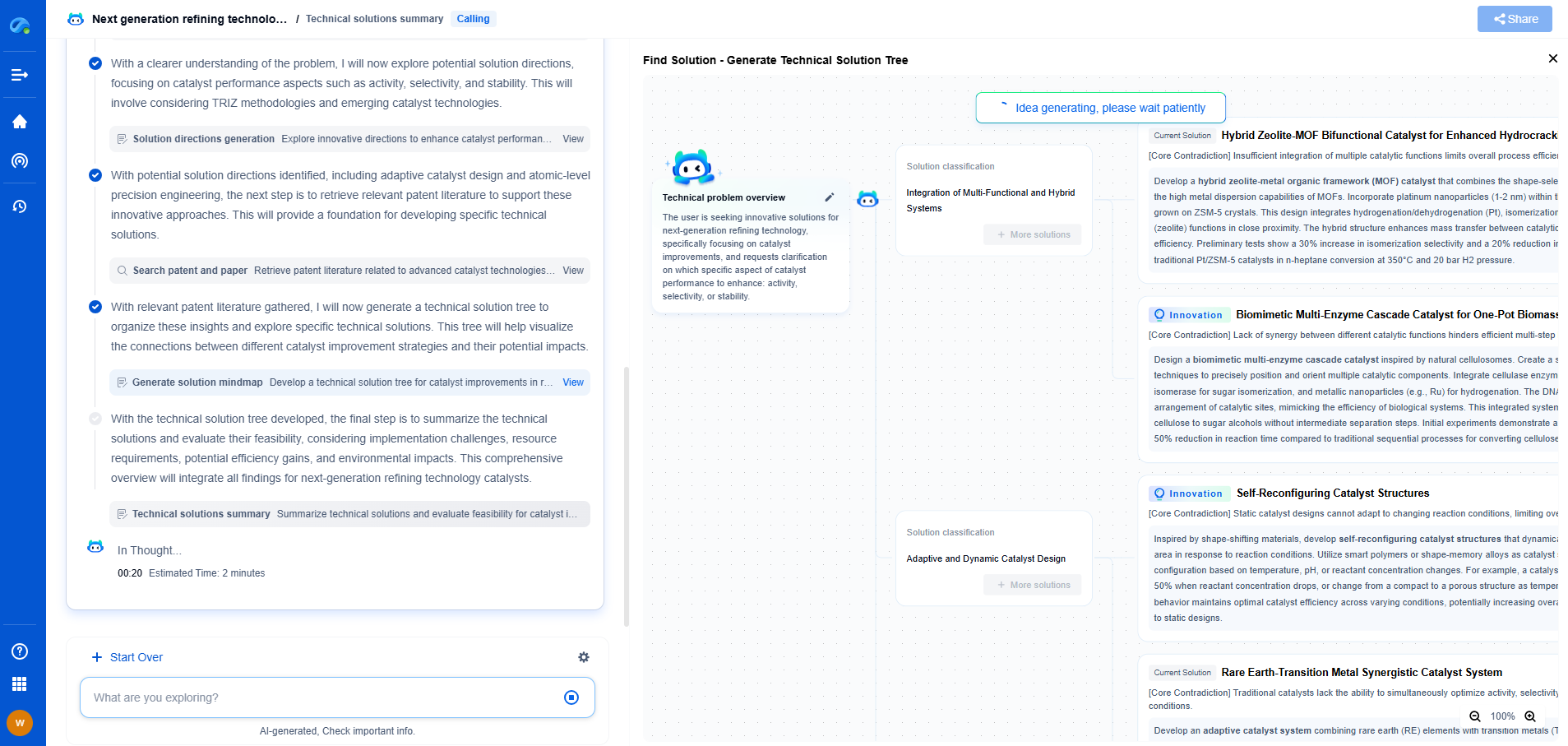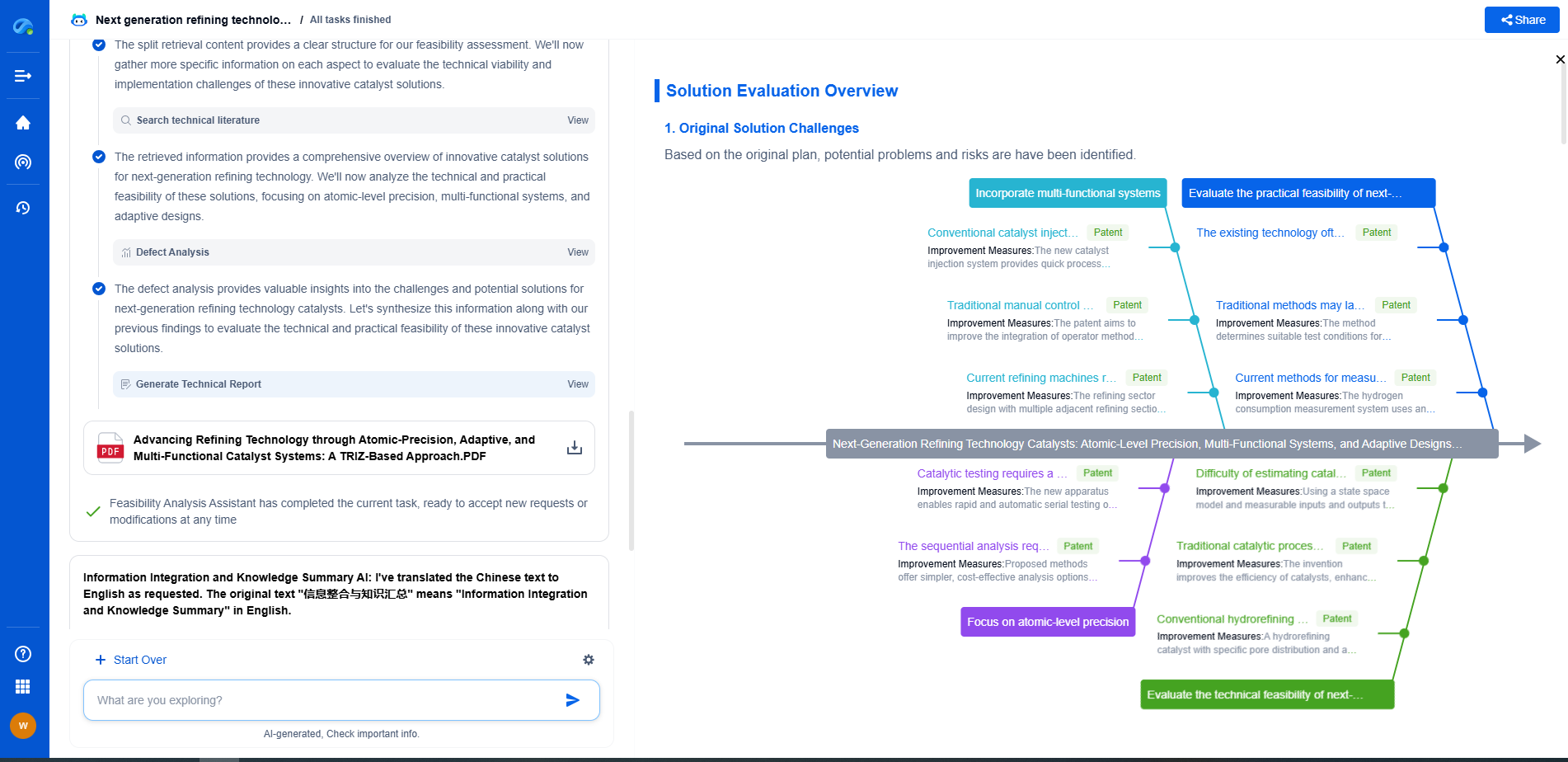5G Modulation Techniques: QAM, OFDM, and More
JUN 27, 2025 |
As the world embraces the rapid advancement of technology, the transition from 4G to 5G networks has brought about significant improvements in data speed, connectivity, and overall communication efficiency. At the heart of 5G technology are the modulation techniques that make these advancements possible. Modulation is the process of varying one or more properties of a periodic waveform to transmit a signal. In 5G, several modulation techniques work together to enhance performance and ensure seamless communication. Among them, Quadrature Amplitude Modulation (QAM) and Orthogonal Frequency Division Multiplexing (OFDM) are prominent. Let’s delve into these techniques and explore their roles in the 5G framework.
Understanding Quadrature Amplitude Modulation (QAM)
Quadrature Amplitude Modulation (QAM) is a modulation technique that combines two amplitude-modulated signals into a single channel, facilitating the transmission of more data. QAM is particularly effective in scenarios where high data rates are needed and is a key player in achieving the high-speed data transfer rates promised by 5G.
QAM works by modulating the amplitude of two carrier waves, which are 90 degrees out of phase with each other. This results in a two-dimensional signal space, where each combination of amplitudes can represent a unique set of bits. The higher the QAM order, the more data symbols are transmitted per carrier wave, ultimately increasing the efficiency and speed of data transmission.
However, higher-order QAM requires a stronger signal and is more susceptible to noise and interference. Thus, while 5G utilizes higher-order QAM for increased data rates, it also relies on robust error correction techniques to maintain signal integrity.
The Role of Orthogonal Frequency Division Multiplexing (OFDM)
Orthogonal Frequency Division Multiplexing (OFDM) is another cornerstone of 5G technology. This technique divides a high-speed data stream into multiple lower-speed streams, which are then transmitted simultaneously over several closely spaced subcarriers. The orthogonality of these subcarriers prevents them from interfering with each other, making OFDM highly efficient for transmitting large amounts of data over wireless networks.
OFDM is particularly beneficial for combating issues like multipath fading and inter-symbol interference, common in wireless communication environments. Its resilience to such challenges makes it an ideal choice for 5G, where maintaining a stable connection is paramount as devices move and environments change.
OFDM also supports adaptive modulation and coding schemes, which dynamically adjust based on the channel conditions. This adaptability ensures that 5G networks can maintain performance even in less-than-ideal conditions, offering users a consistent and reliable experience.
Advanced Modulation Techniques in 5G
Beyond QAM and OFDM, 5G networks incorporate additional advanced modulation techniques to meet their performance goals. Massive MIMO (Multiple Input Multiple Output) is one such technique, which utilizes multiple antennas at both the transmitter and receiver ends to improve data throughput and spectral efficiency. This allows for better handling of high user density and increases the network's capacity.
Beamforming is another innovative approach used in 5G. It focuses the transmission of signals in specific directions rather than broadcasting them in all directions. This targeted approach enhances the signal quality and range, reducing interference and improving overall network performance.
Conclusion: The Future of 5G Modulation
The modulation techniques employed in 5G networks are pivotal in realizing the potential of this next-generation technology. QAM and OFDM, along with other advanced methods like Massive MIMO and beamforming, create a robust framework that supports the high-speed, reliable, and efficient communication required in today's digital age. As 5G continues to evolve, these techniques will undoubtedly adapt and improve, paving the way for even greater technological advancements and connectivity solutions.
Unlock Next-Gen Innovation in Communication Technology with Patsnap Eureka
The field of communication technology is evolving at breakneck speed—from 5G and satellite systems to next-gen wireless protocols and quantum communications. Staying ahead demands more than just information—it requires strategic insights, real-time patent intelligence, and a deep understanding of technological trajectories.
Patsnap Eureka, our intelligent AI assistant built for R&D professionals in high-tech sectors, empowers you with real-time expert-level analysis, technology roadmap exploration, and strategic mapping of core patents—all within a seamless, user-friendly interface. Whether you're optimizing signal processing designs, navigating 3GPP standards, or exploring IP strategies for IoT and 6G networks, Eureka helps you move faster, think deeper, and innovate smarter.
Try Patsnap Eureka today—and see how it can transform the way you work across the entire communication technology innovation lifecycle.
- R&D
- Intellectual Property
- Life Sciences
- Materials
- Tech Scout
- Unparalleled Data Quality
- Higher Quality Content
- 60% Fewer Hallucinations
Browse by: Latest US Patents, China's latest patents, Technical Efficacy Thesaurus, Application Domain, Technology Topic, Popular Technical Reports.
© 2025 PatSnap. All rights reserved.Legal|Privacy policy|Modern Slavery Act Transparency Statement|Sitemap|About US| Contact US: help@patsnap.com

